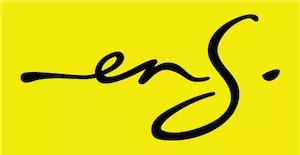- within International Law, Law Department Performance and Consumer Protection topic(s)
On 21 November 2024, the High Court of Uganda delivered a key judgment addressing various issues in intellectual property law. The case involved a copyright dispute between Knight Frank Uganda Limited ("the Plaintiff") and Broll Uganda Limited and Broll Valuation & Advisory Services ("the Defendants"). The decision covers copyright protection for maps, the nature of commissioned works, the distinction between economic and moral rights, and the standard for trade secret protection under Ugandan law. This article offers an overview of the decision and emphasises the court's analysis of copyright infringement.
Background
The dispute arose from allegations of copyright infringement involving a valuation report prepared by the Defendants for one of their clients. The client provided the valuation report to the Plaintiff for review, as the Plaintiff was managing the property subject to the valuation. The Plaintiff discovered that the report contained similarities to its earlier retail report, including a map extract detailing upcoming retail projects in Kampala. The Plaintiff alleged that a former employee, who later joined the Defendants, shared the content from its retail report. The Defendants denied the allegations and argued that the map lacked the originality required for copyright protection.
The Defendants further asserted that the Plaintiff had moral rights to the report and should not claim damages for the economic rights in the report. The Plaintiff claimed damages in the excess of USD 718,000, interest and costs. The damages claimed included USD 300,000 in exemplary damages, USD 300,000 in general damages and costs in software replacement of USD 118,000.
The court addressed several critical questions including copyright ownership and trade secret protection in the retail report and map extract, and whether there was any infringement of those rights.
Copyright protection in maps
The court held that maps are eligible for copyright protection under the Copyright and Neighboring Rights Act (Cap. 222) ("CNRA"). It emphasised that copyright protection is granted for original works reduced to material form, with originality determined by the independent effort, skill, and judgment demonstrated by the author in creating the work. The court held that sufficient skill and judgment was exercised in creating the map extract making it eligible for copyright protection.
Commissioned works and copyright ownership
It was not in dispute that the Plaintiff had been paid to prepare its report by several clients. The crux of the argument on commissioned works revolved around Section 8(1)(b) of the CNRA, which grants economic rights in commissioned works to the party that commissions the author to provide the work and pays for that work. The Plaintiff argued that this provision applied exclusively to government entities, international organisations, or employed authors. The court disagreed, emphasising that the statute's language applies broadly to any commissioning party.
The court cited the case of Sylvia Nabiteeko Katende v. Bank of Uganda (HCCS No. 443 of 2010), which held that commissioned works vest economic rights in the commissioner, even in the absence of an employment relationship. The court in the Sylvia Nabiteeko decision determined that artistic works created by a fine artist during a competition organised by the then Kampala City Council ("KCC"), which were subsequently used in a sculpture and later featured on a banknote issued by the Bank of Uganda, constituted commissioned works. The Court held that KCC, as the commissioning entity, retained the economic rights to the artwork. The decision clarified that the artist's employment status with KCC was irrelevant to the classification of the work as commissioned.
The court in this case held that the economic rights in the retail report and map extract belonged to the clients who commissioned the retail report, while the Plaintiff retained moral rights as the work's author.
Economic Rights vs. Moral Rights
The distinction between economic and moral rights was elaborated in this decision. Economic rights under the CNRA allow the holder to exploit the work commercially, which includes the rights to publish and re-produce the works. In contrast, moral rights protect the author's right to claim authorship and prevent distortion, alteration or modification of the work but do not accord the right to commercial exploitation of the work.
The court concluded that the economic rights to the retail report and map extract rested with the Plaintiff's clients, while the Plaintiff retained moral rights including the right to be recognized as the author of this information where it has been cited. Damages of UGX 70,000,000 (approx. USD 18,486) were awarded for the breach of these moral rights.
Trade Secrets
The Plaintiff claimed that the retail report and map extract constituted trade secrets. While the Plaintiff demonstrated efforts to restrict access through password protection and limited employee access, the court found no evidence of enforceable confidentiality measures, such as non-disclosure agreements required for trade secret protection.
The court emphasised that for information to qualify as a trade secret, it must meet all three conditions required for trade secret protection, i.e. (i) the information must not be generally known or readily accessible; (ii) the information must have commercial value due to its secrecy; and (iii) reasonable steps must be taken to maintain its confidentiality.
In this case, the Plaintiff failed to satisfy the third element as they had not taken sufficient steps to maintain the confidentiality of the information. The testimony presented failed to conclusively refute the likelihood that other employees of the Plaintiff might have had some level of access to the report. Further, there was no evidence indicating that the Plaintiffs had explicitly communicated to these employees that the report constituted confidential proprietary information. Additionally, no measures were implemented, such as confidentiality agreements or restrictive covenants, to prevent employees from disclosing the information contained in the report. As a result, the trade secret claim was dismissed on these grounds.
Award of the court
The court issued remedies, including a permanent injunction preventing the Defendants from reproducing parts of the retail report without acknowledging the authorship. General damages of UGX 70,000,000 were awarded, with the court noting that the Plaintiff had already benefited financially from the reports through its clients and that only a small portion, approximately 10%, of the report was used by the Defendants. The court also imposed interest on the damages at 14% per annum from the judgment date until payment in full and awarded one-third of the suit's costs to the Plaintiff. This represented a substantial success for the Defendants in the reduction of the claims from the approximate sum of USD 718,000.
Conclusion
This judgment is a well-reasoned contribution to Uganda's limited jurisprudence in the areas of copyright and trade secrets law in Uganda. The court's interpretation of commissioned works sets a clear standard for determining economic rights, while its analysis of moral rights affirms their independent significance. The dismissal of the trade secret claim provides valuable guidance on the standard required to establish trade secret protection.
By addressing complex issues surrounding copyright, ownership of commissioned works, economic and moral rights, and trade secrets, this decision not only resolves the dispute but also enriches Uganda's intellectual property law framework, setting an important precedent for future cases.
* ENS Uganda acted for the defendants in this matter
The content of this article is intended to provide a general guide to the subject matter. Specialist advice should be sought about your specific circumstances.
[View Source]


